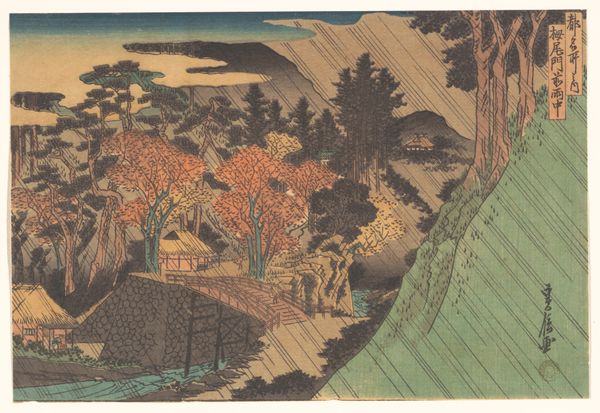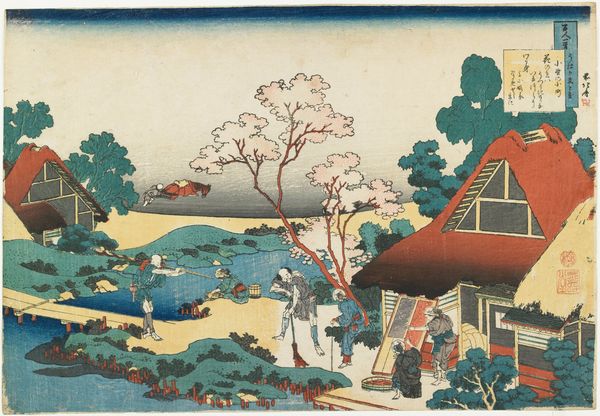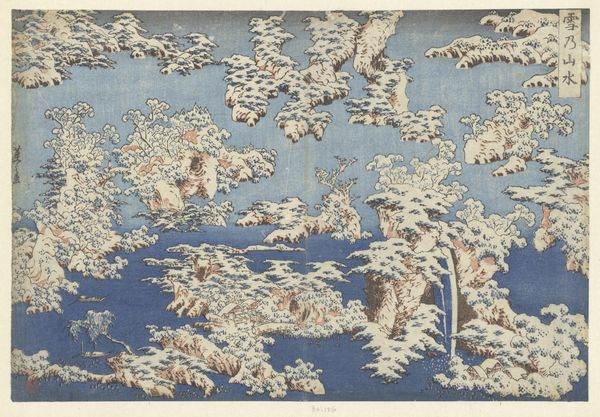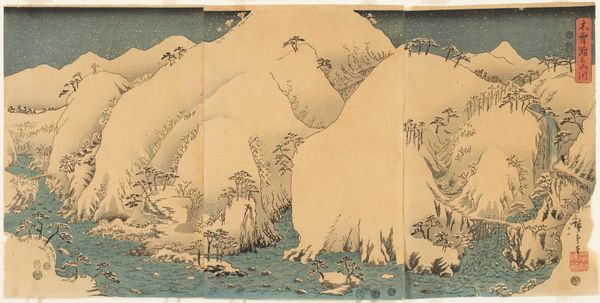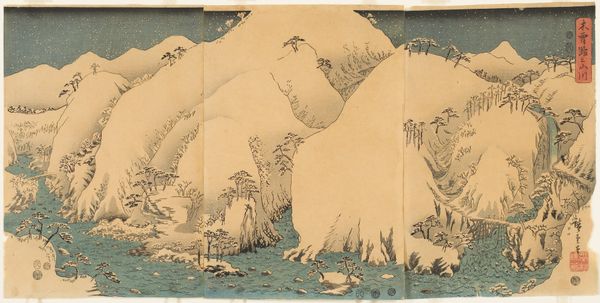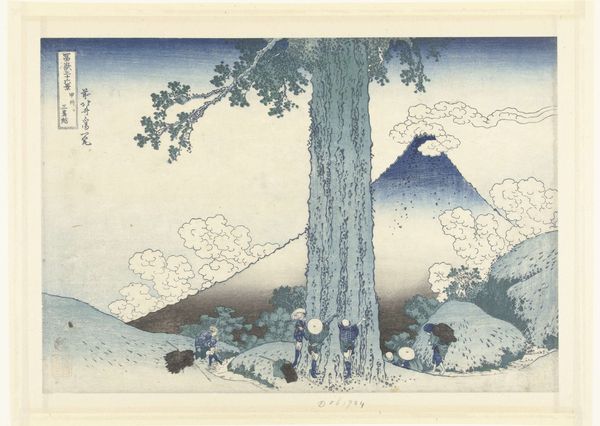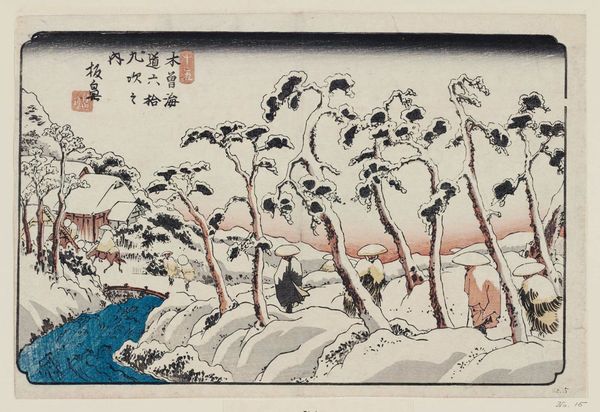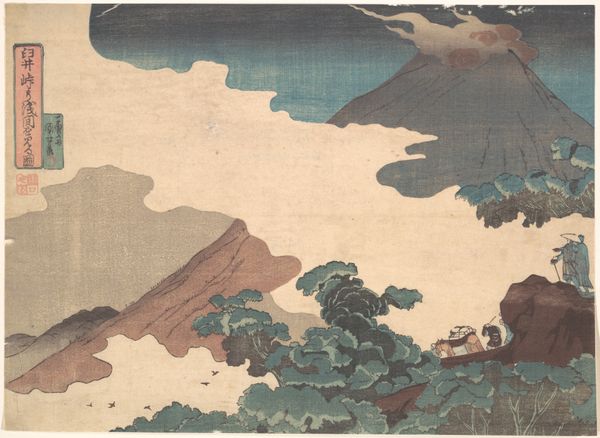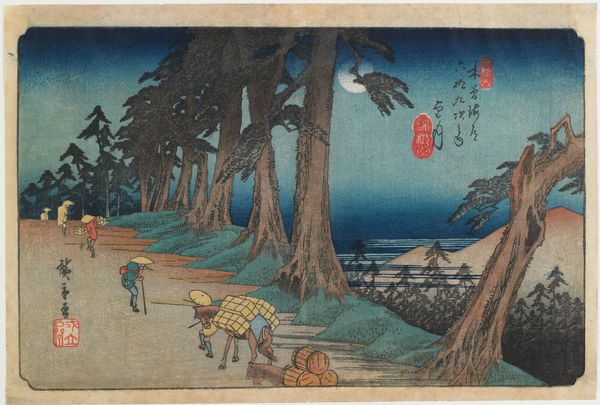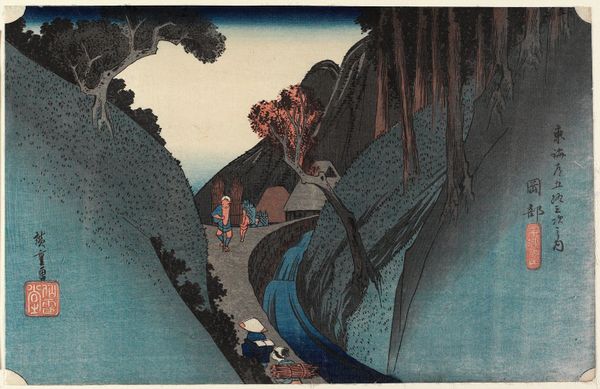
print, ink
# print
#
asian-art
#
landscape
#
ukiyo-e
#
japan
#
ink
#
botanical drawing
Dimensions: 15 x 19 5/8 in. (38.1 x 49.8 cm) (image, sheet)
Copyright: Public Domain
Curator: Just lovely. "Tea Stand for Viewing Autumn Colors" crafted around the 1810s, part of the collection at the Minneapolis Institute of Art. It exemplifies the ukiyo-e tradition. The print is a combination of ink and watercolor on paper. Editor: It feels delicate and serene. The washes of color, especially those vibrant reds of the maple leaves, almost vibrate off the page. Curator: Absolutely. The scene captures a quintessential element of Japanese culture. The deliberate arrangement of nature and built environment creates a very specific type of leisure. A tea ceremony nestled within a fiery autumn landscape—it's intended to invite reflection, even reverence. This print offers a lens into a time when landscapes began to represent idealized, accessible versions of nature for burgeoning urban populations. Editor: Look at the actual structure of that tea stand; a perfect, tiny platform cantilevered just so, but with simple materials, roughhewn wood. And the placement! Juxtaposing natural and made, blurring the lines. It's as much about the artistry of building and selecting wood as the finished aesthetic of autumnal beauty. And of course, how would this stand have been constructed? And by whom? Were the makers revered or were they unacknowledged laborers? Curator: Interesting point. Though these prints were widely distributed, influencing global aesthetic movements such as Japonisme, their creation and dissemination depended heavily on a sophisticated system involving publishers, block carvers, and printers—a structured artistic industry tied into broader social systems of commerce and access to beauty. The prints democratized access to a visual culture, playing a pivotal role in shaping perceptions of Japan. Editor: Indeed. This makes you wonder about the availability of materials; pigments, paper types and printing practices. Each layer demands a skill, passed down through artisan groups or individual ingenuity. I appreciate the level of craft here as an essential element shaping both composition and context. It seems such details have had influence beyond the cultural borders of its origins, in unexpected material and social forms across many centuries and different industries. Curator: The ability to capture something both culturally specific and universally resonant certainly gives these ukiyo-e prints enduring appeal and makes it easier to understand its lasting power in art history and social imagination. Editor: It does highlight how intertwined the labor of crafting and creating art objects, with both informing each other. This makes one ponder about art and the importance of the process by which these material forms materialize.
Comments
No comments
Be the first to comment and join the conversation on the ultimate creative platform.
